ADDRESS AT THE INAUGURATION OF THE ELEVENTH INTERNATIONAL WORKSHOP ON TECHNICAL & SCIENTIFIC ASPECTS OF MST RADAR AT NATIONAL ATMOSPHERIC RESEARCH LABORATORY, GANDANKI, TIRUPATI
11-12-2006 : Gadanki, Tirupati
Atmosphere : A great Aerial Ocean
"Discoveries need great deeds"
I am delighted to participate in the inauguration of the Eleventh International Workshop on Technical & Scientific aspects of MST Radar at National Atmospheric Research Laboratory (NARL) Gadanki, Tirupati. I greet the organizers, space scientists, technologists, researchers, scientists from abroad and distinguished invitees participating in this function. While I was going through the different subjects being discussed in the Workshop, it is clear how the MST Radar and atmospheric research over the years have enriched each other. I am glad to know that based on the recommendations of the last workshop held in Peru, NARL is in the process of establishing the International Network of Tropical Atmospheric Radars (INTAR). The six billion population of the world is faced with many challenges in sustenance and improving the quality of life especially when the human kind has been taking much more from the nature than what it is contributing. We have to understand the planet, its dynamic atmosphere and interaction processes in the basic form to adapt our lifestyle and for making the planet Earth a safer habitat for posterity by enriching and making it sustainable. Hence, I would like to discuss on the topic ?Atmosphere : A great Aerial Ocean? which influences the societies and the entire mankind.
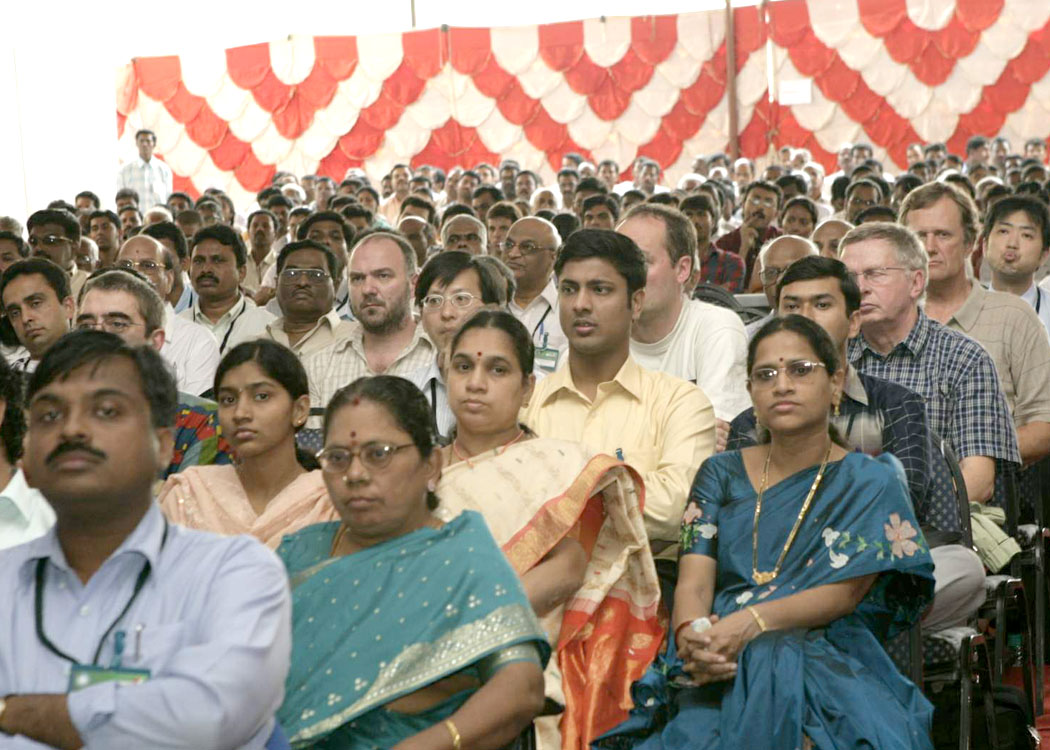

Integrated Atmospheric research
During 1963 to 1975, the Thumba Equatorial Rocket Launching Station (TERLS) was the seat of atmospheric research in the country in an integrated way. Why I am saying the integrated way is that four types of experiments for atmospheric research were being conducted simultaneously. The four types were:
1. Meteorological Rocket were launched from TERLS every week with copper chaff payload up to 60 kms altitude that would provide wind vectors. Simultaneously, synoptic rocket launches were taking place in many parts of the world. These experiments were supported by balloon experiments upto 30 kms. The meteorologists had thus the data from sea level up to 60 kms altitude. This experiment was pioneered by Prof KR. Ramanathan and Prof. Pishoroty of PRL in India. Myself and my team were involved in building the rocket and meteorological payload.
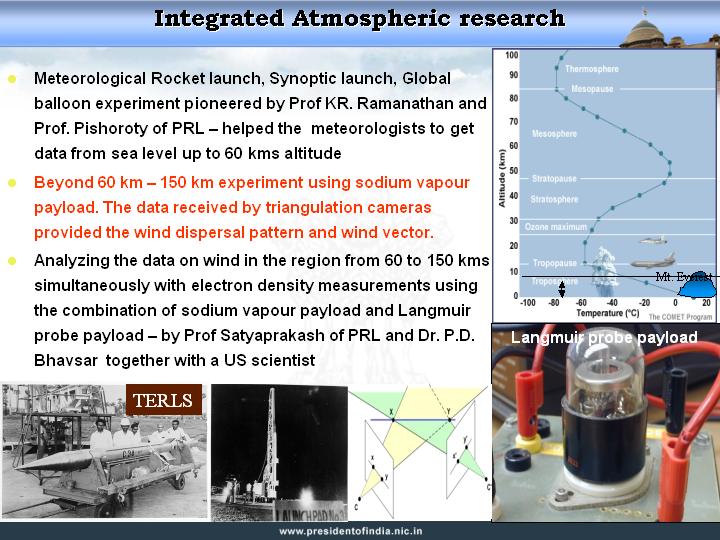
2. Second type of sounding rocket experiments were simultaneously progressed by Prof P.D. Bhavsar of PRL and Prof Blemont of CNES, France. This experiment was conducted by using sodium vapour payload for the region between 60 to 150 kms altitude. The data received by triangulation cameras provided the wind dispersal pattern and wind vector.
3. The third type of experiment was conducted with the combination of sodium vapour payload and Langmuir probe payload. This experiment led to data on wind in the region from 60 to 150 kms simultaneously with electron density measurements. These experiments were pioneered by Prof Satyaprakash and Dr. P.D. Bhavsar of PRL together with a US scientist
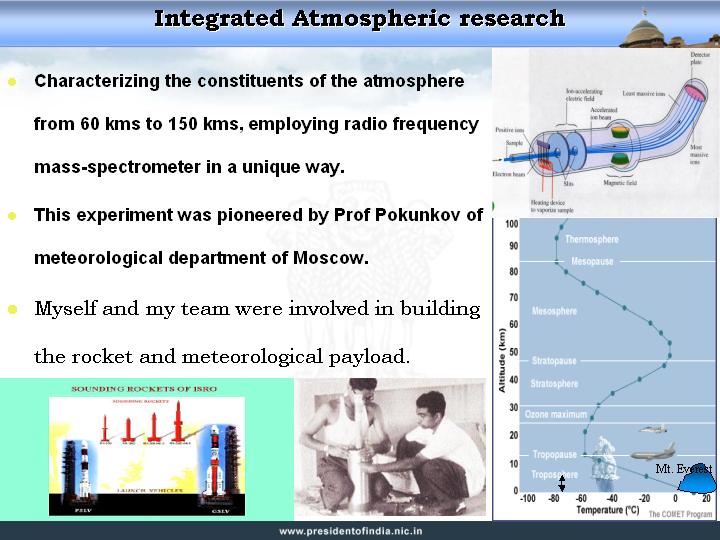
4. The fourth experiment was pioneered by Prof Pokunkov of meteorological department of Moscow. His experiment was unique using radio frequency mass-spectrometer. This would characterize the constituents of the atmosphere from 60 kms to 150 kms.
All four types of atmospheric science experiments were conducted in India with the participation of hundreds of scientists for characterizing the regions from troposphere to thermosphere supported by ground based experiments.
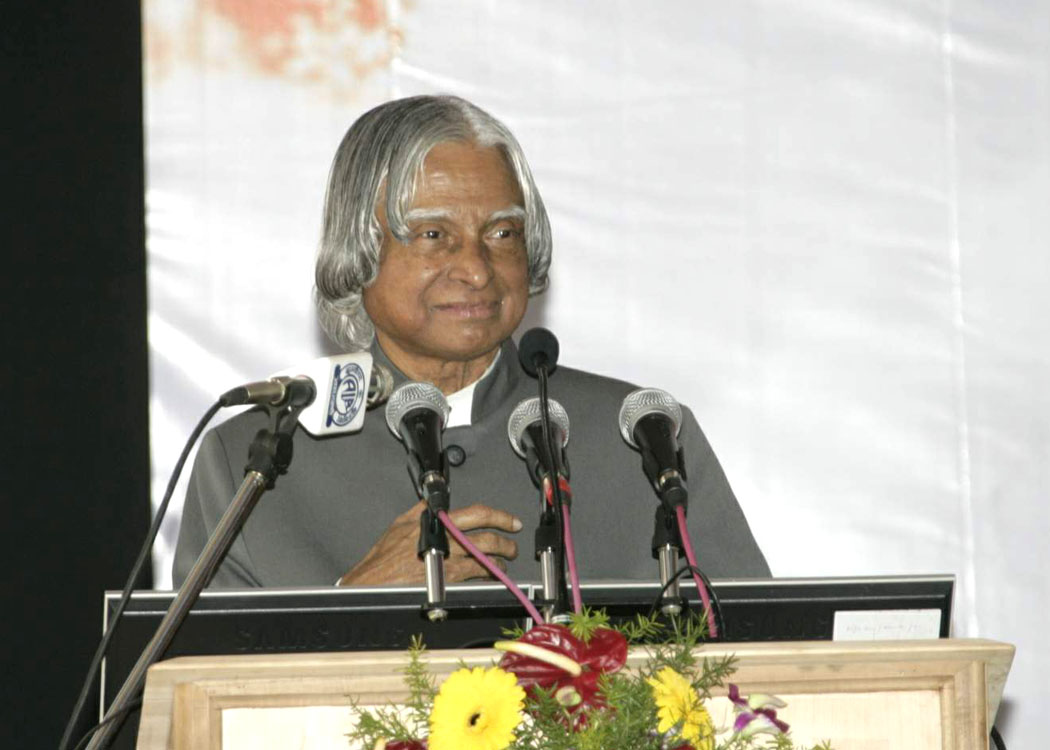

Stratospheric cooling and Tropospheric warming
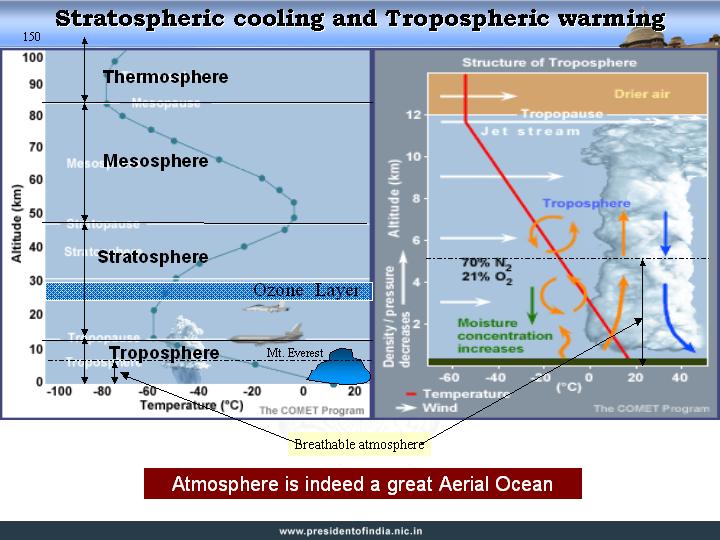
Since then, the experimental techniques and instrumentation have advanced and also the ground based system like MST radar participating in the mission of atmospheric research. When I was preparing for this lecture yesterday, I asked myself what have we learnt from atmosphere during the last four decades? What information enriched us? How our atmosphere is dynamically changing in 20th century to now in the 21st century? As you all are aware, Earth is experiencing both stratospheric cooling (due to ozone hole) and tropospheric warming (due to increased green house gases).
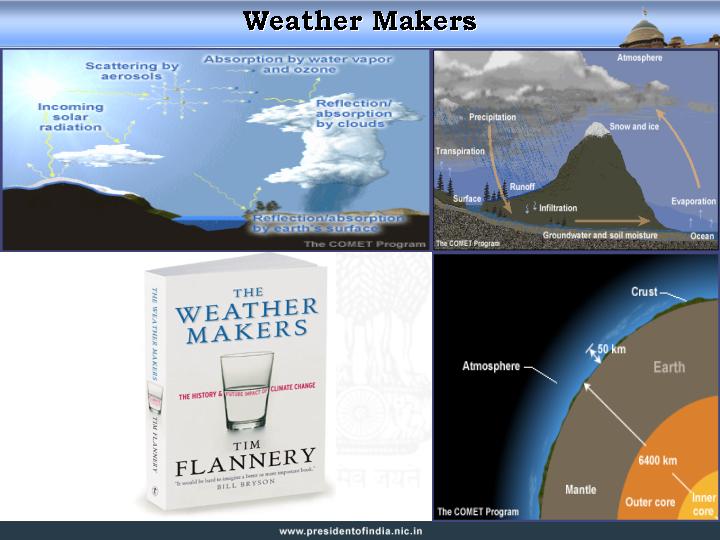
Also, I would like to refer Mr. Tim Flannery?s book ?THE WEATHER MAKERS? where the author begins pointing out that twentieth century has witnessed CO2 content in atmosphere going upto three parts per 10,000. It is reported that in the beginning of the twenty first century that CO2 content in atmosphere has already reached 6 to 10 parts per 10,000.
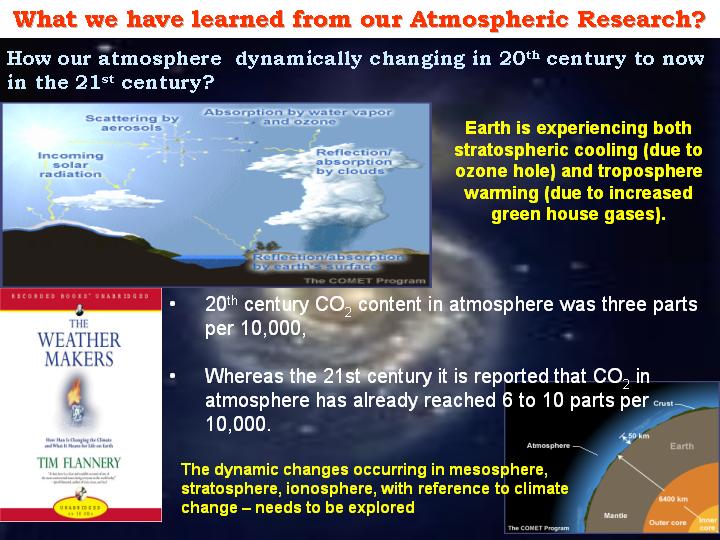
I am confident, that the atmospheric science researchers assembled here would tell us, what will be the dynamic changes occurring in mesosphere, stratosphere, ionosphere, with reference to climate change.
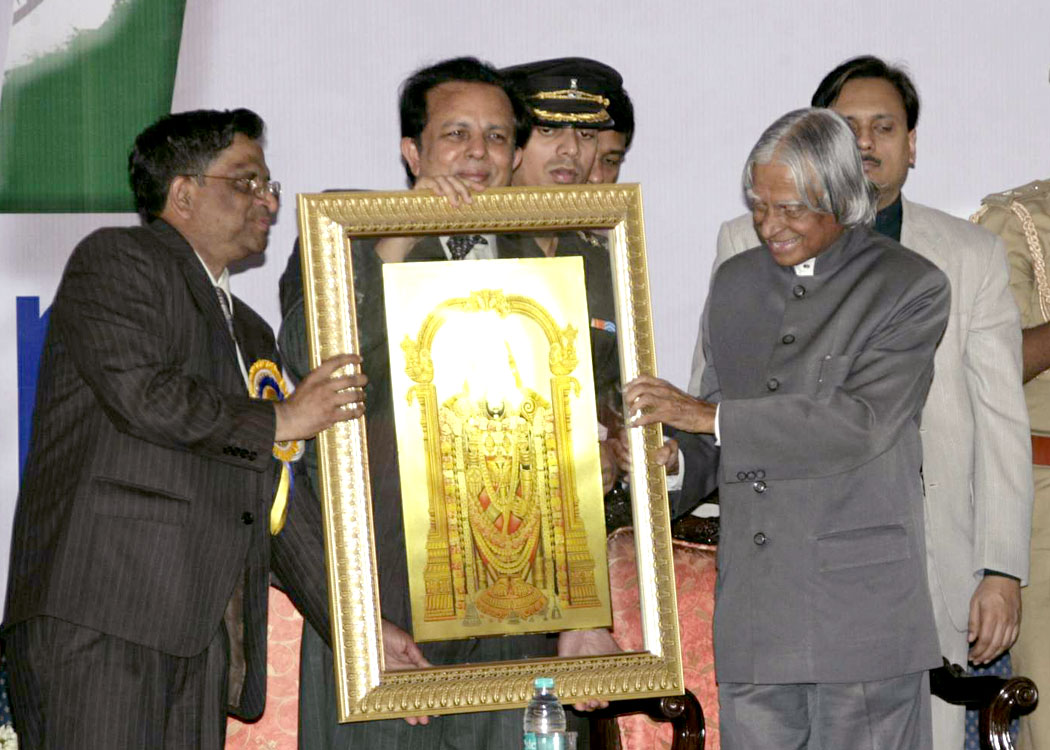

MST Radar : An important instrumentation system for atmospheric research
I recall the early 1960?s at Thumba, when the triad of atmospheric scientists, rocket engineers and range engineers specifically radar builders was at work on rocket experiments to probe atmosphere. As rocket engineers, my team and myself were launching small sounding rockets for atmospheric research from India and abroad. My good friend Shri Aravamudan, was busy using tracking radars for tracking the rocket trajectory. Soon the need was realized to design, develop and build a ?C? band radar for the envisaged for the first Satellite Launch Vehicle - 3 (SLV-3) and future missions. The challenge was taken by the ISRO radar team. Shri G. Viswanathan who is now the Director of the ISRO Radar Development Programme and who led as Project Director for realization of MST Radar was a key member. The ?C?band radar system was realized in participation with industries like Bharat Electronics Limited and has been serving the tracking needs of launch vehicles.
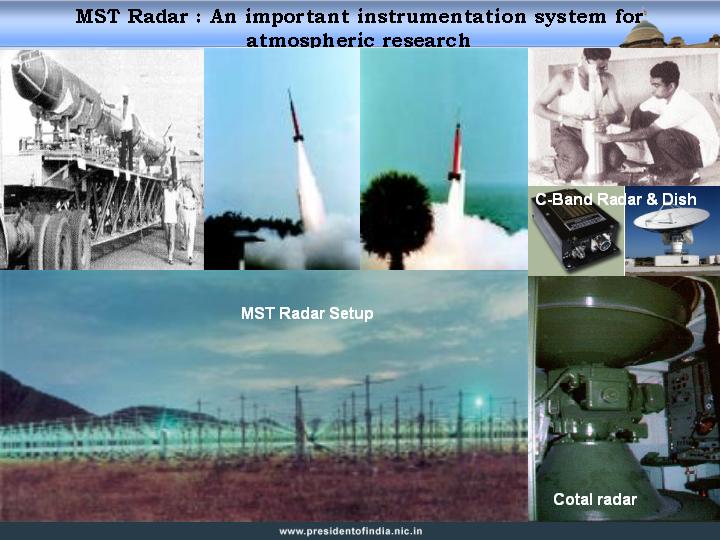
With the expertise developed, thus, and the continuous quest for development, we have a variety of Radars like PCMC, MST and Doppler Weather Radars. This is an example of how our technology teams have risen to the occasion to meet mission and scientific needs, despite stringent specifications and demanding design and fabrication challenges.
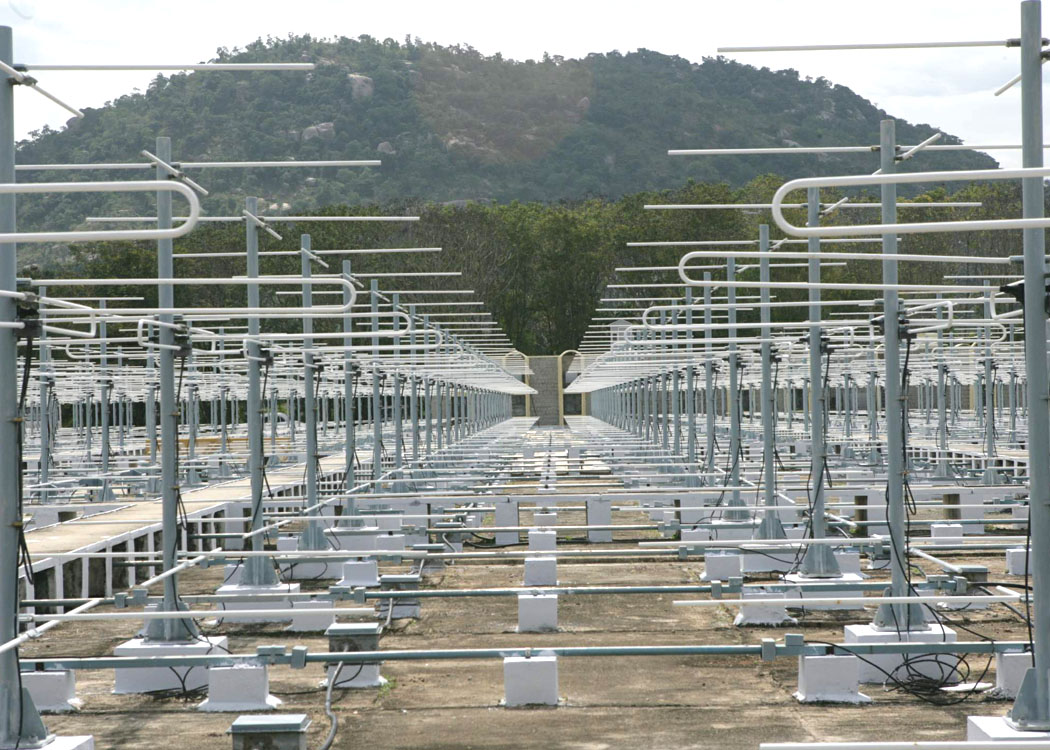
The MST radar set up in the beautiful environs of Gadanki has become an important research tool for the Indian and international scientists. There is a need to derive the specification for atmospheric radar and other research tools including observation, software and computation facilities of the future. Since we have a large number of international participants, global requirements of such systems could also be worked out as a workshop objective, which will be useful for participative research, development and applications among the countries.
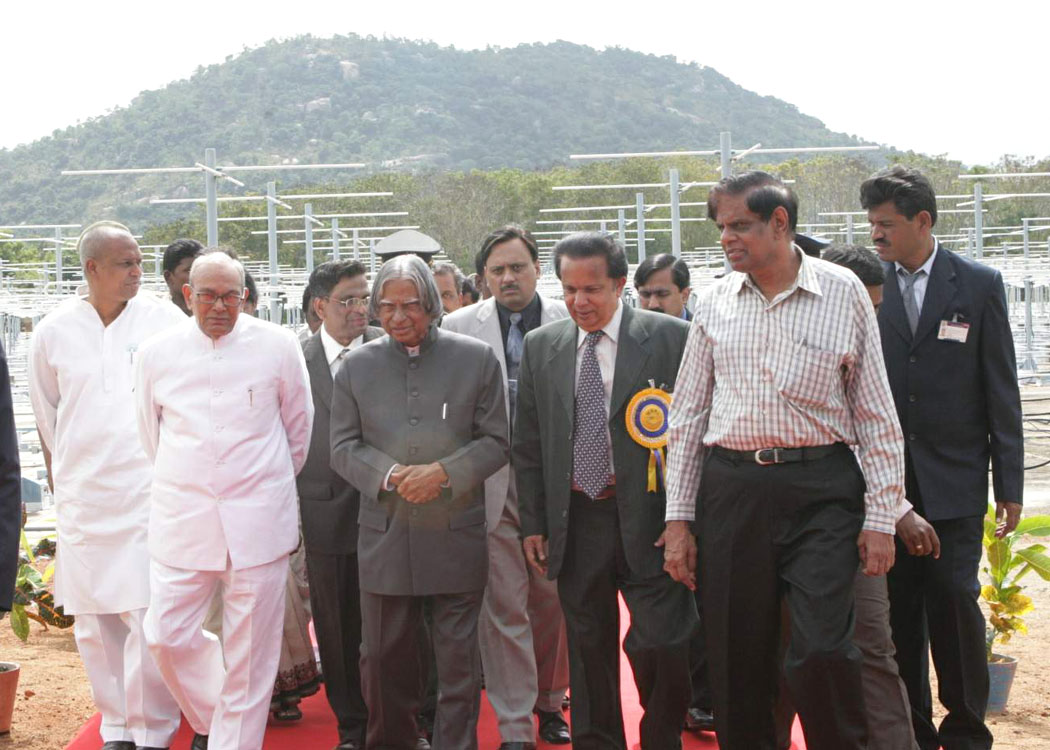

NARL Research
I am glad that the National Atmospheric Research Laboratory (NARL) at Gadanki has been providing excellent information on lower atmospheric winds, precipitation, turbulence along with mesospheric turbulence and ionospheric plasma irregularities during different seasons of a year for the past one and a half decades. I am happy to note about the multi-institutional initiative of PRWONAM (Prediction of Regional Weather with Observational Meso- Network and Atmospheric Modelling) aims to deliver a Reliable Operational Short-term Weather Forecast System with unique inputs from NARL.
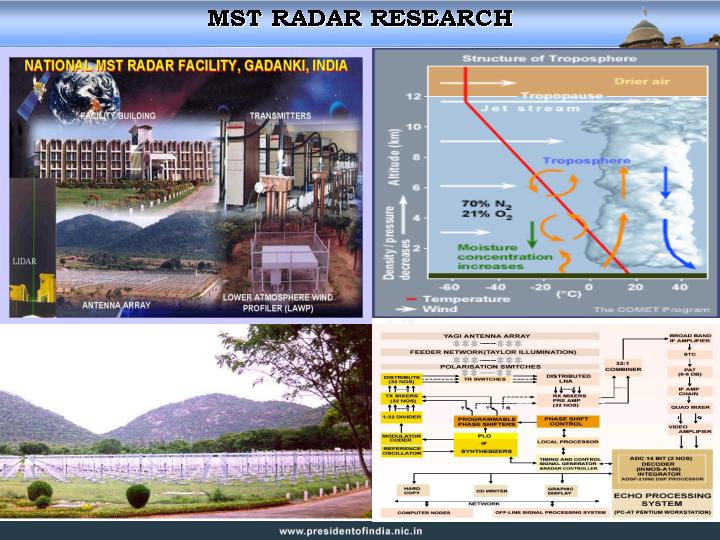
I understand that the research priorities of NARL would include tropical tropo-pause dynamics, stratosphere-troposphere exchange processes, tropical convection and tropical precipitation, turbulence in the lower atmosphere, monsoon related studies, gravity waves and planetary waves.
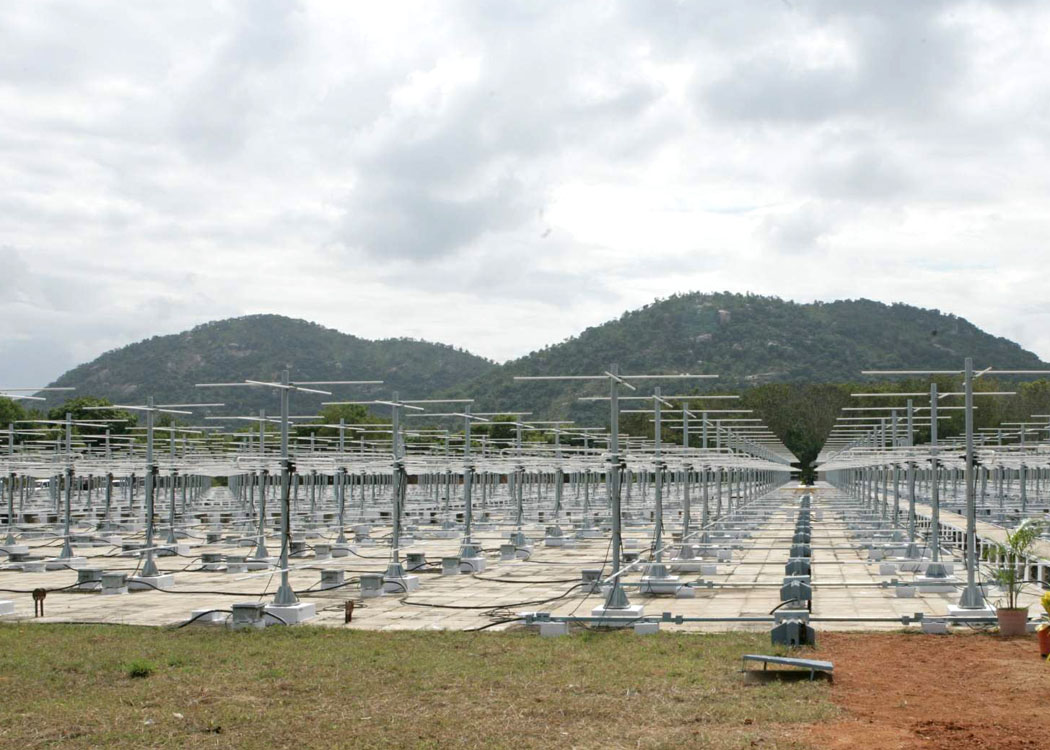
Now, I would like to discuss with you a new research finding which may be of interest to the scientific community assembled here.
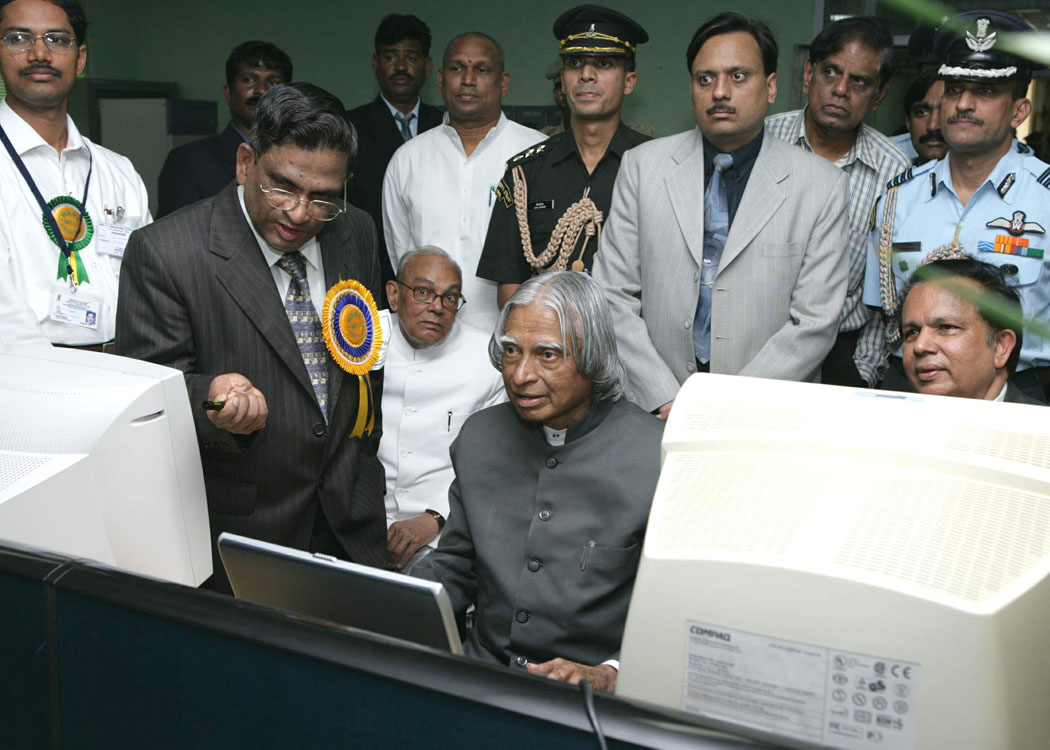

Emission from trees and climate change
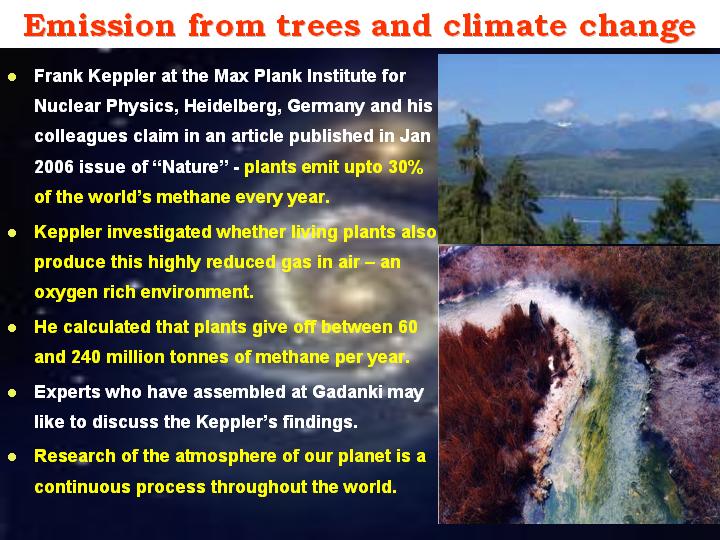
Frank Keppler at the Max Plank Institute for Nuclear Physics, Heidelberg, Germany and his colleagues claim in an article published in Jan 2006 issue of ?Nature?, that plants emit upto 30% of the world?s methane every year. This has totally changed the discussions on the causes for climatic change. After discovering that fallen leaves, or plant litter, produced methane, Keppler investigated whether living plants also produce this highly reduced gas in air ? an oxygen rich environment. He calculated that plants give off between 60 and 240 million tonnes of methane per year. ?It is a new pathway of methane formation,? said Keppler, ?it will change our thinking about plants and their role in climate change.? Experts who have assembled at Gadanki may like to discuss the Keppler?s findings. The scientists participating in this Workshop may have certain experiences in this connection which they may like to put forth for deliberations with reference to climate change. Research of the atmosphere of our planet is a continuous process throughout the world. This Workshop is discussing certain aspects of atmospheric research with reference to MST radar. I presented the four types of initial experiments of atmospheric research carried out in India.
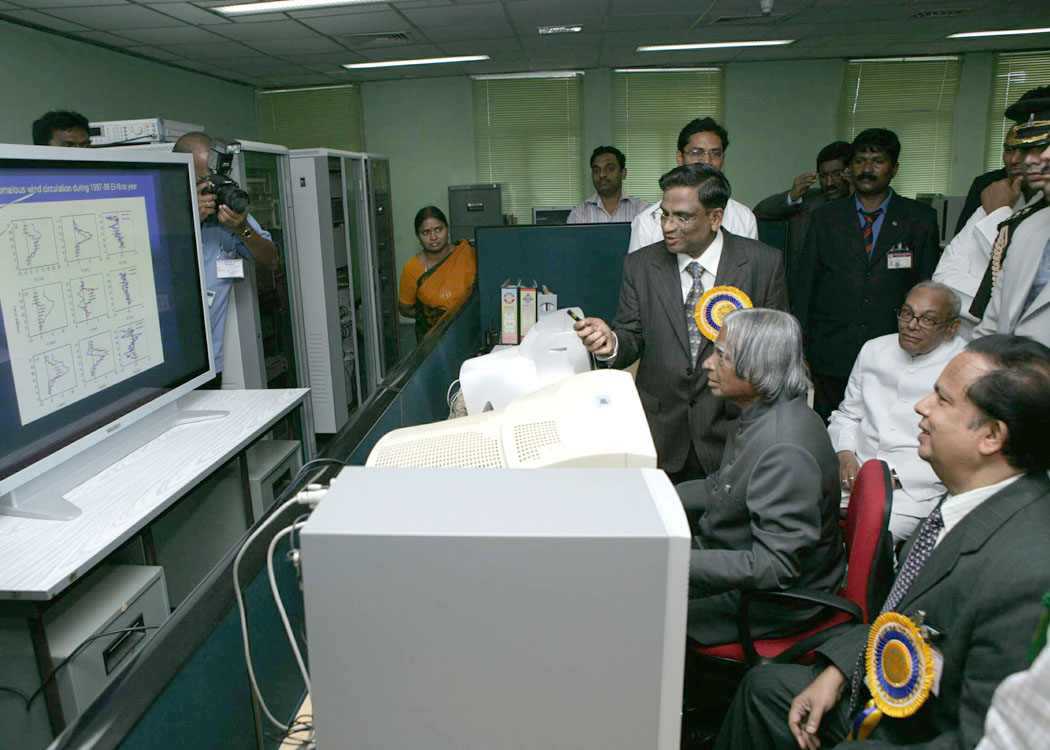

We, the weather makers
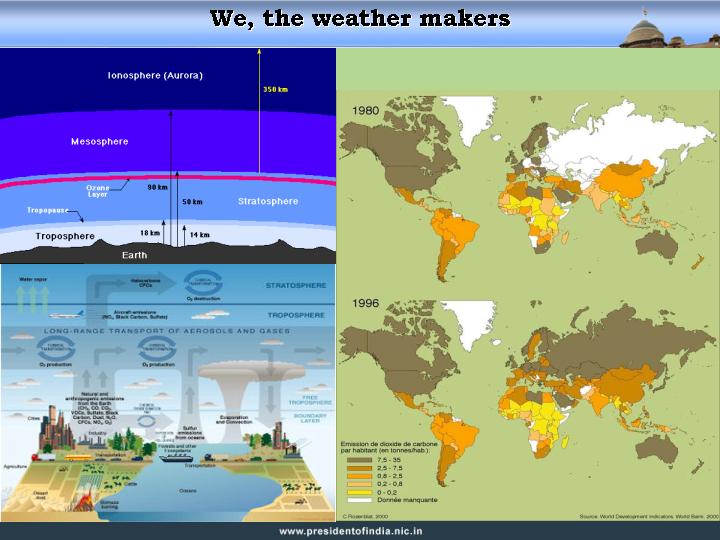
Friends, when I am with you I realize, how you are all engaged in a basic research on the dynamics of climate and environment, that has direct impact on human life. Today, the people of planet Earth, particularly the highly developed societies are indeed the ?weather makers?. These societies are responsible for generating the highest volume of green house gases, which directly affects troposphere and stratosphere. Is there a solution? Yes. Today, 90% of our power generating sources use fossil based fuel such as coal, gas and oil which are responsible for green gas emission. Hence the solution is energy independence instead of energy security by progressively using renewable clean energy sources such as wind, solar, nuclear and bio-fuel. I had put forth energy independence to my nation during my national broadcast on the eve of Independence Day 2005.
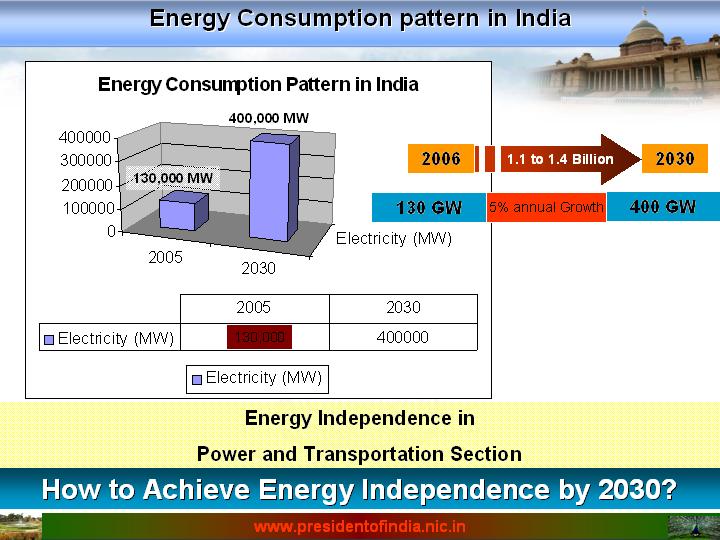
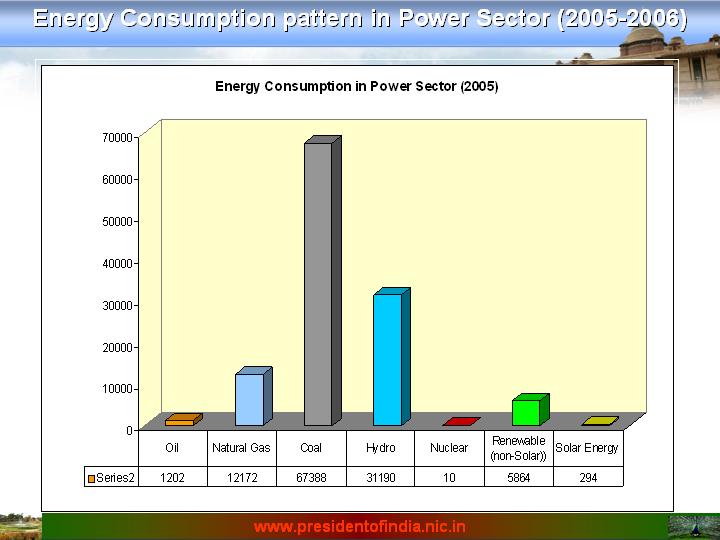
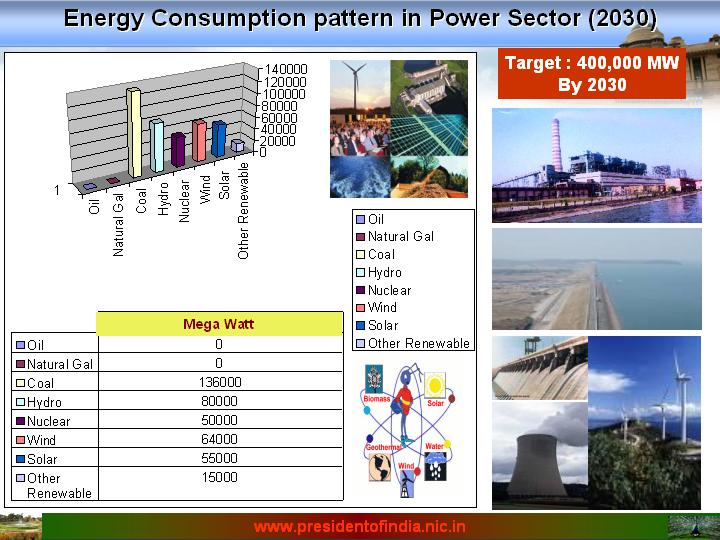

Conclusion
Friends, when I see you all from different parts of the world, I would like to say that you are blessed with a rare opportunity for transforming your research for better understanding of the atmosphere and using them for practical applications like weather/climate, monsoon prediction, study of rain content in given precipitation levels and reducing the CO2 content in atmosphere. The results and applications ultimately should lead to ensuring better quality of life for the human beings in this planet. This can be achieved through the networked partnership of scientists belonging to many nations working on the integrated study of land, atmosphere, ocean and space using the core competence of different countries.
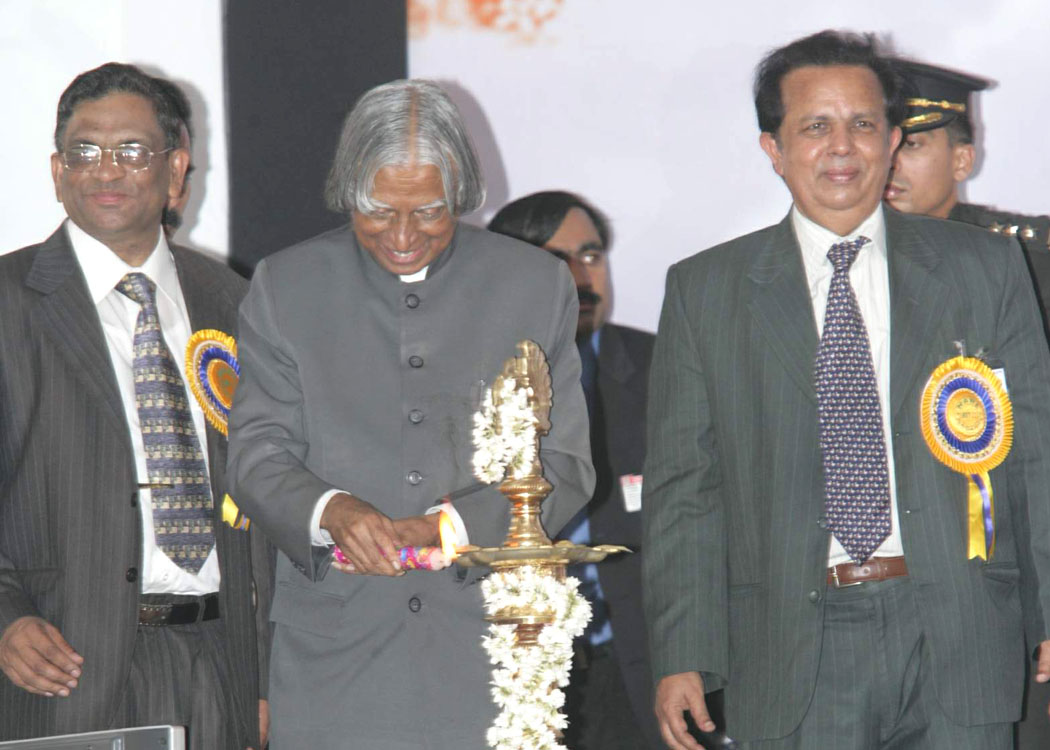
Keeping the importance of the frontiers of new knowledge in mind, I have the following suggestions for the participants of this Workshop.
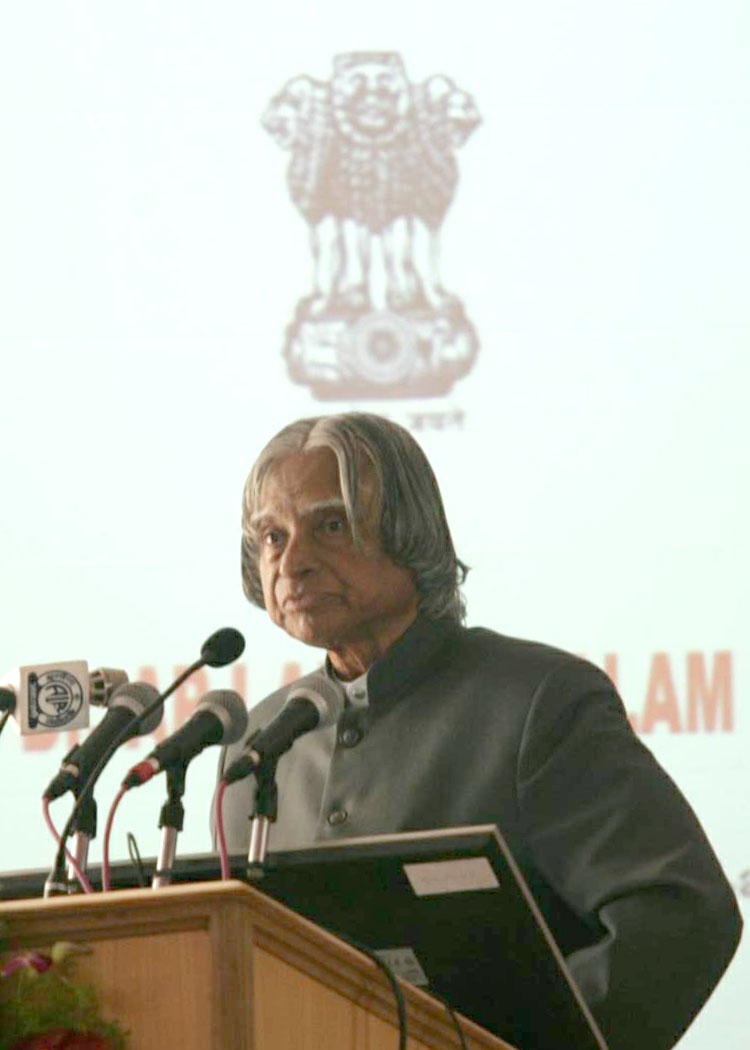
1. Refining of Indian standard atmosphere for the entire country and for atmospheric properties up to 2000 kms. altitude from sea level.
2. Improving weather prediction model using atmospheric research.
3. The climate change is indeed a great concern of humanity. Earth is experiencing both stratospheric cooling and tropospheric warming. The increased CO2 emission year by year is reported to be responsible for this. This has to be established quantitatively by atmospheric scientists which can be a valuable input which can be a valuable input for policy makers for evolving energy independence based on clean energy sources such solar, wind, nuclear and bio-fuel.
4. Carrying out further research on Keppler?s finding about the plants generating large volume of methane. This research can also be extended to evolve an economic method through which we can collect the methane for its productive utilization.
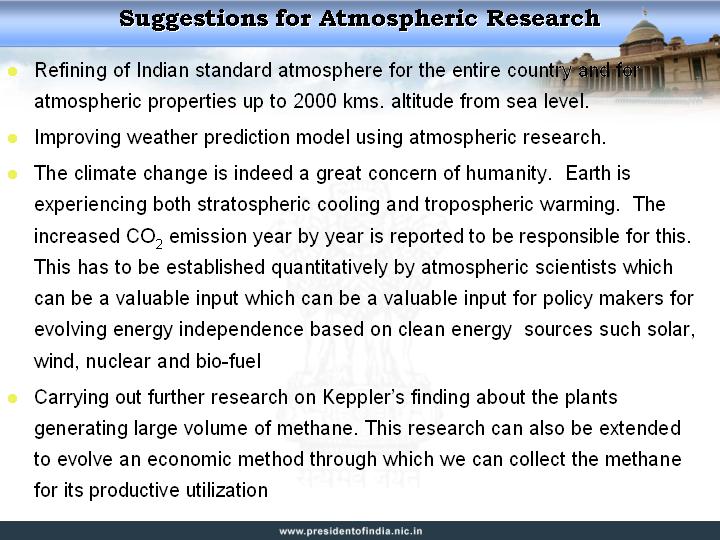
5. Prediction of quantum of rain for particular cloud conditions by evolving suitable models and observations for a given cloud condition including the development of ground and space based Polarimetric radar.
6. Using high resolution satellite data in conjunction with MST Radar data for refining and enlarging the atmospheric predictions.
7. Ground based weather Radars providing national mosaics of weather with precise individual village level coverage to help in agriculture, water resource management and to provide disaster warning for severe weather events like cyclones.
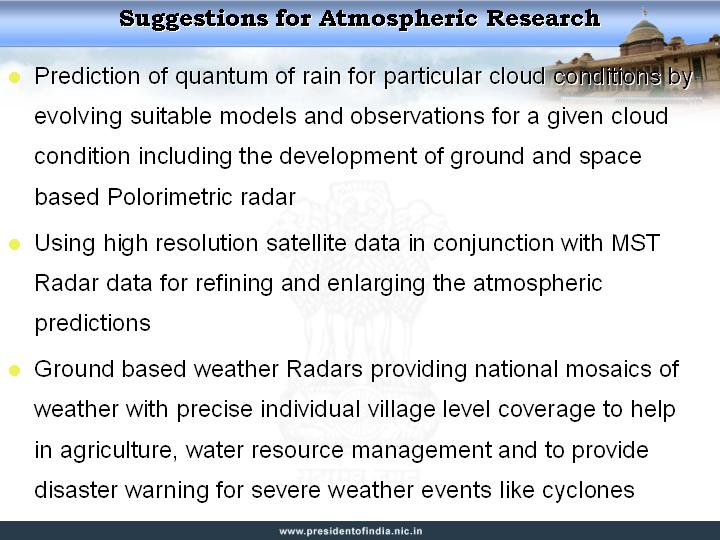
With these words, I am happy to inaugurate the Eleventh International Workshop on Technical & Scientific aspects of MST Radar at National Atmospheric Research Laboratory, Gadanki, Tirupati. My best wishes to all the participants of this Workshop for success in their mission of discovering new avenues of atmospheric research.
May God bless you.
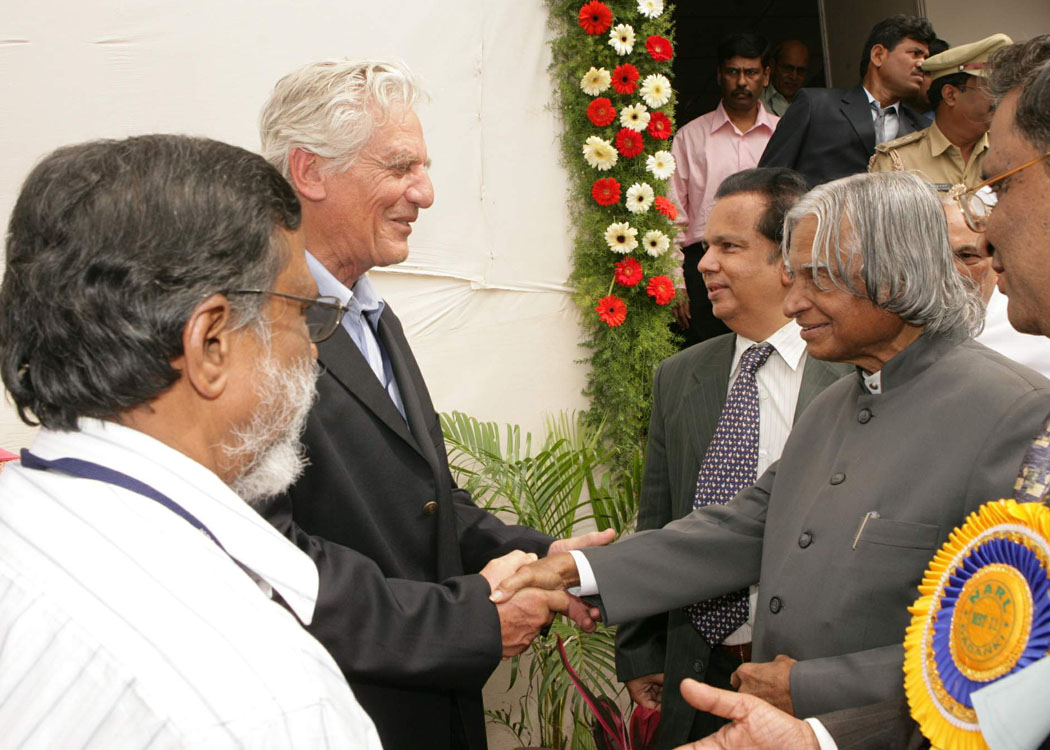
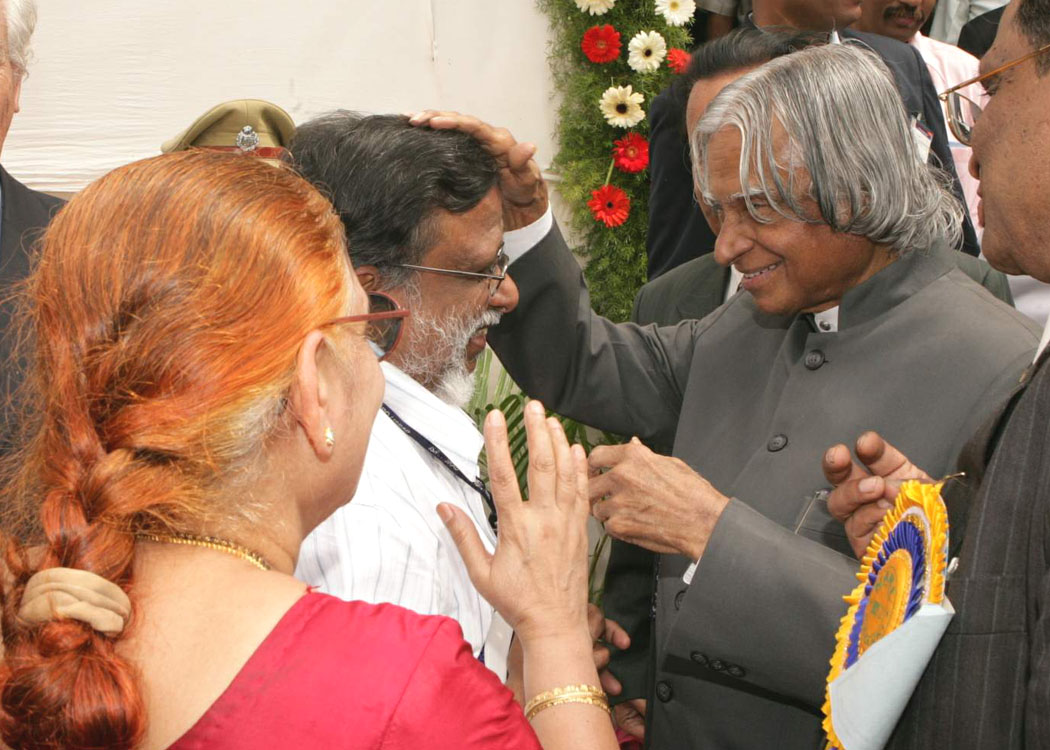
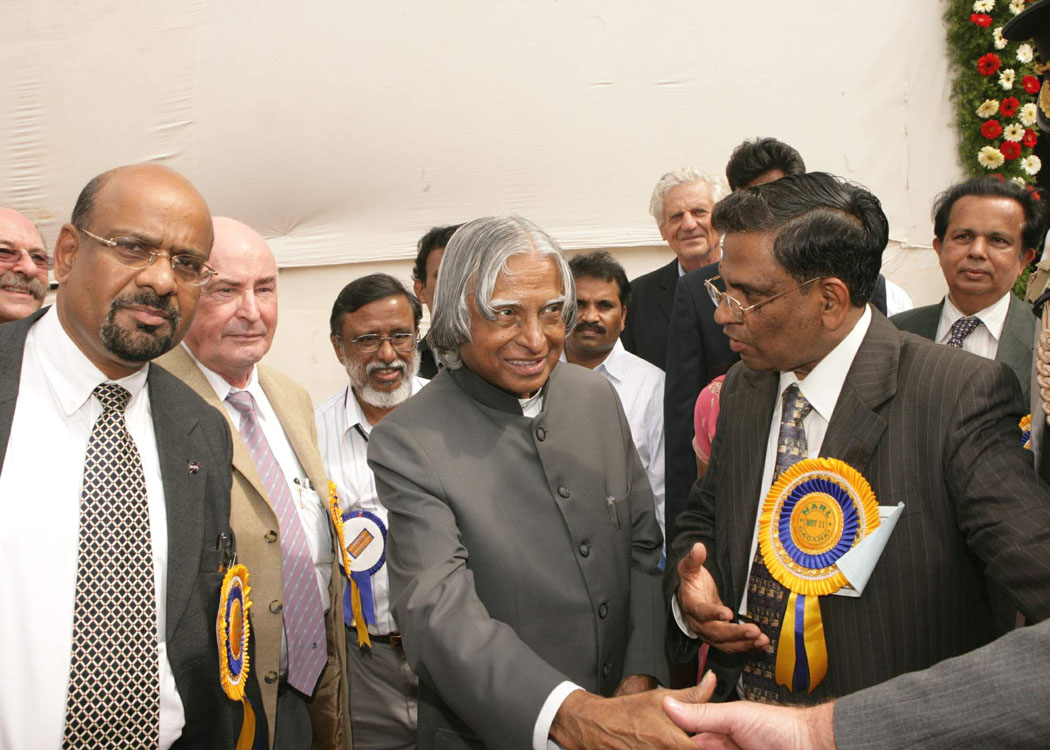
<<Back
|